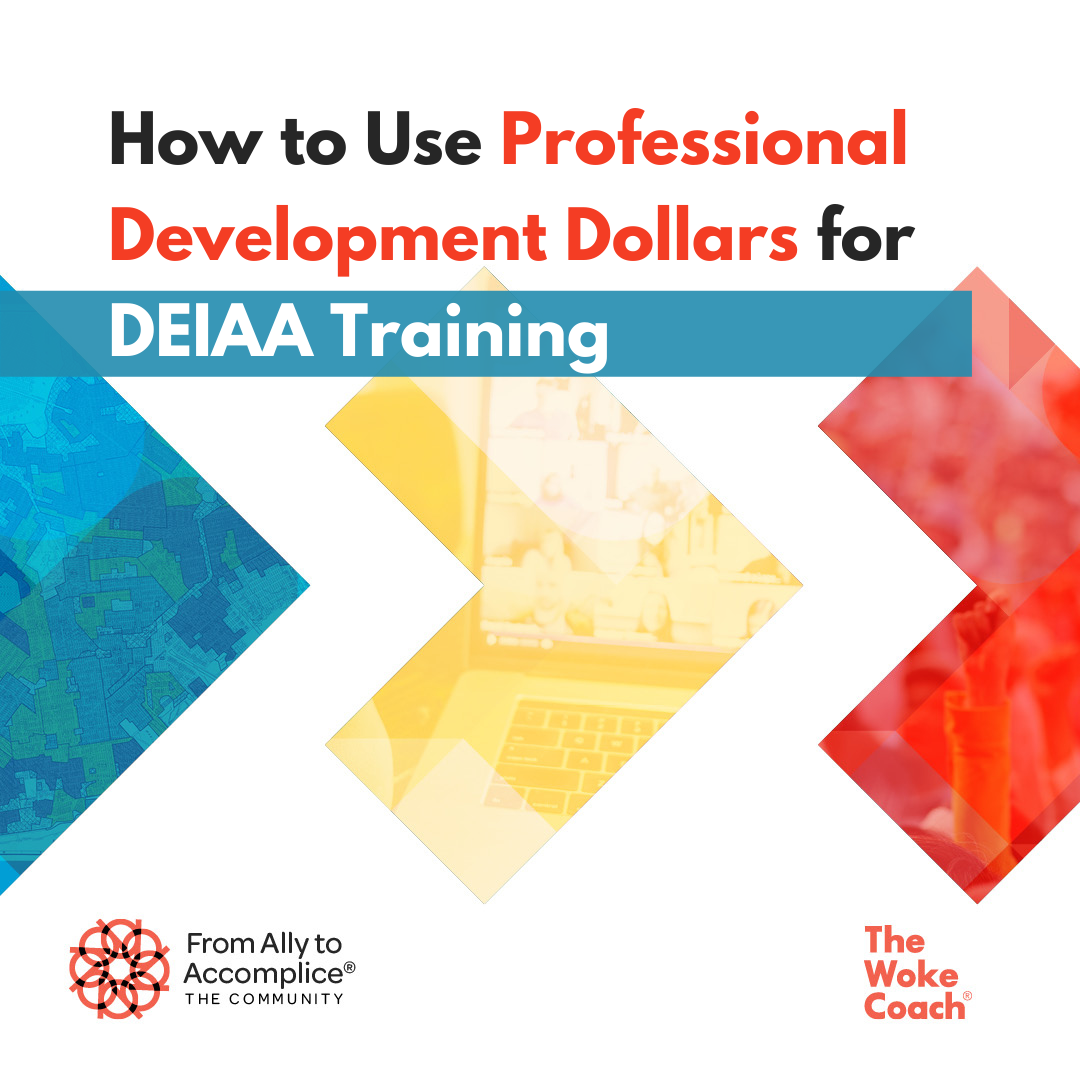Professional development is often focused on hard skills–learning a new automated marketing tool or going to an industry conference. Yet who we are as people and the perspectives we bring to our work and our relationships at work are equally as important as coding or number crunching.
I’ll say that again: Who you are at work is as important as the work itself.
Every company wants to feel welcoming and to be more diverse. That starts with the people already at the company, not a revised pipeline plan. Any new Black hires coming into your organization won’t stay long if you haven’t also committed money and time to ensure existing employees are educated on topics and practices around diversity, equity, inclusion, accessibility, and antiracism (DEIAA).
For example, a strong case can be made for the value of DEIAA training in creating a sense of belonging at work. And the data shows that belonging is a critical need in workplaces today: Deloitte’s 2020 Human Capital Trends report “ranked ‘Belonging’ as the top human capital issue that organizations face today. Seventy-three percent responded that fostering a sense of belonging was important to their organization’s success with 93% agreeing that a sense of belonging drives organizational performance.” Undoubtedly, fostering a sense of belonging at work is everyone’s job–it’s often cultivated and reinforced through individual interactions and relationships on teams and in departments.
During the Great Resignation, researchers at MIT examined 34 million online profiles across industries and sectors. They found that toxic culture is ten times more important than compensation as the top predictor of employee turnover. And what is a toxic culture, you ask? “Our analysis found that the leading elements contributing to toxic cultures include failure to promote diversity, equity, and inclusion; workers feeling disrespected; and unethical behavior.” Failure to promote DEIAA is the number one cause of people believing their work culture is toxic. And there you have another data point you can share: people will quit a job if the culture doesn’t promote the very skills you are seeking to build with your training.
You start to have a case if you can show that your training contributes to belonging, performance, and attrition. But that’s just the beginning. Answer these questions for your boss or supervisor when you ask to use professional development dollars for DEIAA training or education:
What and when is the training?
Start with a specific ask, not something general. Find a course, a series, or a community that you reference directly and provide details. If you’ve done your homework, there will be reasons why that experience is the right one for both you and your situation. This leads us to…
How will you benefit in your role, and how will the business benefit?
This is a crucial case to make. Use data to show how inclusive and diverse workplaces have a competitive edge. Help connect the value of the training directly to your role–you don’t have to be in HR to benefit from learning about DEIAA practices, which impact vendor selection, community impact, customer service, product development, content production, and more. Find the throughline to your role or accountability and build the bridge.
When thinking about organizational benefits, connect your experience and potential outcomes to the values and purpose that drive your bottom line. The financial and business benefits of DEIAA are increasingly well documented in quantitative and qualitative studies. Find that supporting material, use it, and share it with others to make their own cases.
Don’t be afraid to use phrasing or marketing points from the training website. Here at The Woke Coach, we intentionally publish testimonials on our site as proof points that potential clients and community members can use. Most other educators or conferences will do this, use their words to underscore their value!
What does the training cost?
Money should be an upfront part of your pitch. If you know your budget already covers the cost, simply share the fee and move on. If you know your budget won’t cover it, explore a few options for how to make up the difference. Perhaps you can use some of next year’s training allocations, perhaps you can contribute some of your own money, or maybe you re-allocate money from another line item. Focusing on a solution before it becomes a problem will help the decision-maker (aka, your employer) understand different options.
How will this impact your workday?
Explain clearly and thoughtfully how you plan to balance the training commitment with the other work on your plate. Yes, we should all have the leeway to spend our professional time on things others than job responsibilities, but a manager or leader still wants to ensure things won’t fall through the cracks.
How will you bring back what you learned?
Information sharing is valuable to a team or company–so use that! Offer to share what you learned–while you can’t share educators' materials with your peers without their permission (that’s an IP issue), you can share how the experience impacted your work, how your perspective changed, or what you learned that you could bring into day-to-day interactions.
Make the ask in email and a request meeting to discuss the proposal. Talking in person about the value and benefits may strike a different cord than an email alone. And truth be told, you may have to be persistent because of the world we live in. DEIAA is still considered a bonus or nice-to-have set of knowledge, not as business-critical. If you are turned down, ask for specific reasons so you can address them in a subsequent proposal. And, if they don’t have specifics, be prepared to have a difficult conversation about whether the decision is biased.
Seena Hodges
Founder + CEO
The Woke Coach

